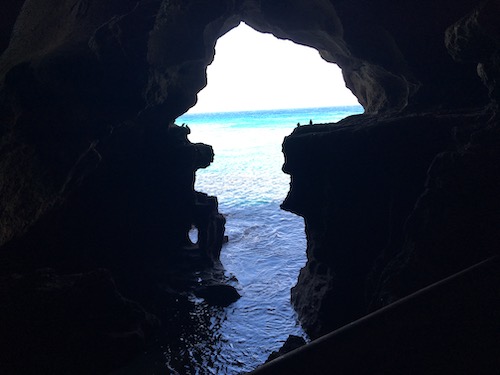By Rabbi Corinne Copnick

Even though Humphrey Bogart and Lauren Bacall didn’t star in a movie about Tangier (who has not seen their fictional romance in Casablanca unfold on a cinema screen?), this busy port-city in Northwestern Morocco has a history to rival Casablanca. Its location at the western entrance to the Strait of Gibraltar – right where the Mediterranean Sea meets the Atlantic Ocean — has given Tangier a trade advantage over the years to the extent that in 1928 it was deemed an international city. Its history as an important port goes back to the time of the Phoenicians in the 10th century B.C.E. History, history, history!
And even though Tangier today is a lively, modern city with attractive landscaping, affluent neighborhoods, and important projects, my daughter and I wanted to visit the old Medina with its colorful mélange of shops and signs. Although it was, in part, once a thriving Jewish neighborhood in Tangier, none of the shops retained names that were likely to be Jewish anymore.
Unlike other cities in Morocco, Tangier never had a mellah (a walled and gated area where Jews were required to live, ostensibly for their own protection) similar to the European ghettos. Nevertheless, the Jewish inhabitants of Morocco understood that they were living in an Arab, mainly Islamic neighborhood, and that certain restrictions applied to non-Islamic residents who lived in Arab lands, including Morocco. Although Jews and Christians were both respected as “People of the Book,” they understood that they were considered inferior to Muslims and expected to defer to them in many ways. In addition, they had to pay a special tax for the privilege of living in Morocco. Basically, they were second-class citizens referred to as dhimmis.
Most of the time, the different religious groups understood their place in Moroccan society and got along very well, but, regrettably, over the centuries (the 8th century and again in the 15th century in the city of Fez, in particular), some large massacres of Jews took place. Centuries later, during the World War II Nazi regime in Germany and the pro-Nazi, Vichy government in France (Morocco , remember, was a French protectorate), many civil restrictions on Jews were put into place –despite the best efforts of the Moroccan King to prevent them.
When World War II ended in 1945, and after its own War of Independence, the State of Israel became a reality in 1948, Moroccan Jews found themselves targeted by a forceful Arab push for them to leave Morocco. Those who had the means immigrated to countries like Canada, France, and South America. At the same time, there was a strong biblical pull for the larger number of Moroccan Jews who for centuries had dreamed of making Aliyah (the ascent of return) to their spiritual home, Israel. And so the mid-20th century exodus to Israel began. In 2019, an estimated one million Jews of at least partial Moroccan ancestry are Israeli citizens – who still have tender feelings for Morocco.
©Corinne Copnick, Los Angeles, 2019. All rights reserved.